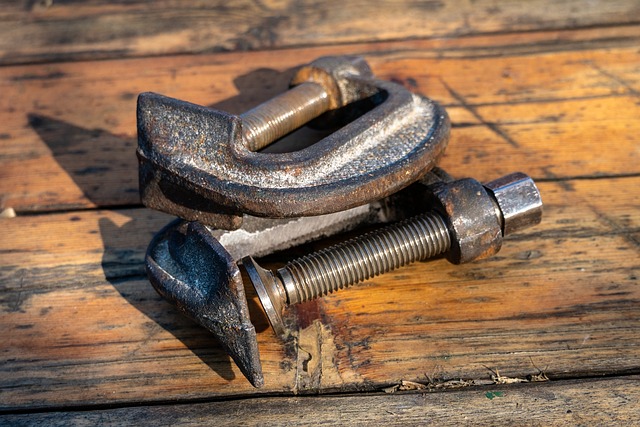Mercedes high-voltage systems, powered by advanced batteries, are transforming modern vehicles with enhanced performance and safety features. Understanding these intricate networks is critical for Mercedes benz repairs, especially high-voltage disconnect procedures. Auto body shops must strictly adhere to OEM safety standards to isolate and secure high-voltage components, prioritizing technician and customer safety while preserving vehicle reliability and optimal performance. This meticulous approach ensures seamless integration of cutting-edge technology into the restoration process. Following a detailed, step-by-step guide for safe Mercedes high-voltage disconnect, including using insulated tools and adhering to OEM standards, is essential for mechanics and DIY enthusiasts to prevent electrical hazards during repairs like car paint or fender repair.
“Unveiling the intricacies of Mercedes high-voltage systems, this comprehensive guide offers an in-depth look at safe procedures for high-voltage disconnects. Following original equipment manufacturer (OEM) safety standards is paramount for professionals and enthusiasts alike. From understanding the complex network of electric components to meticulous step-by-step instructions, we demystify the process. By adhering to OEM compliance, this article ensures best practices for secure disconnections, enhancing safety during automotive maintenance and repairs, specifically tailored for Mercedes vehicles.”
- Understanding Mercedes High-Voltage Systems: An Overview
- Step-by-Step Guide: Performing a Safe High-Voltage Disconnect
- Ensuring OEM Compliance: Safety Standards and Best Practices
Understanding Mercedes High-Voltage Systems: An Overview

Mercedes high-voltage systems are a complex network of components that power modern vehicles, offering superior performance and advanced features. At the heart of this system lies the high-voltage battery, which stores and delivers electricity to various electric and electronic modules throughout the car. This sophisticated setup ensures efficient energy distribution, enhancing both engine performance and safety.
Understanding how these systems work is crucial for any mercedes benz repair or auto body restoration process. Auto body shops engaging in such work must adhere to stringent OEM (Original Equipment Manufacturer) safety standards when performing high-voltage disconnect procedures. This involves carefully isolating and securing the high-voltage components to prevent any electrical hazards, ensuring a safe working environment for technicians and customers alike, and maintaining the overall integrity of the vehicle’s performance and reliability.
Step-by-Step Guide: Performing a Safe High-Voltage Disconnect

Performing a safe Mercedes high-voltage disconnect is crucial for both mechanics and DIY enthusiasts looking to service or repair their vehicles. Here’s a step-by-step guide outlining this critical process, adhering to OEM safety standards. Begin by ensuring all necessary tools are at hand, including insulated gloves, eye protection, and a voltage tester. Next, locate the high-voltage battery terminal, typically marked with a “+” sign. Using the appropriate wrench or socket, carefully loosen and remove the positive battery cable first to avoid any electrical discharge.
After disconnecting the positive cable, repeat the process for the negative terminal, ensuring no short circuits occur. For added safety, ground the vehicle by attaching a ground clamp to an unpainted metal surface away from the battery area. This step is vital for diverting any stray electrical currents, protecting you and your workspace during the Mercedes high-voltage disconnect procedure. Once both cables are securely removed, proceed with the desired repair or maintenance tasks on the vehicle, whether it’s car paint repair, fender repair, or general vehicle bodywork.
Ensuring OEM Compliance: Safety Standards and Best Practices

When it comes to Mercedes high-voltage disconnect procedures, adhering to OEM (Original Equipment Manufacturer) safety standards is paramount. These guidelines are meticulously designed to ensure the well-being of both technicians and customers during vehicle repair services, specifically when dealing with high-voltage systems. Following these standards involves a comprehensive understanding of not just the technical aspects but also the best practices that enhance safety in auto frame repair and general auto repair services.
Technicians must be well-versed in the specific procedures for Mercedes vehicles, which often involve sophisticated electrical architectures. This includes proper handling of high-voltage components, safe disposal of waste, and adherence to protocols designed to prevent accidental discharge or short circuits. By adhering to these OEM safety standards, auto repair services can maintain a high level of professionalism, ensuring customer satisfaction and peace of mind.
Mercedes high-voltage systems, known for their complexity and power, require meticulous handling during any maintenance or repair. The article has outlined a comprehensive guide, adhering to OEM safety standards, for performing a high-voltage disconnect procedure. By following these steps, professionals can ensure the safety of both themselves and the vehicle, maintaining the integrity of the Mercedes’ advanced electrical architecture. This approach not only facilitates effective troubleshooting but also promotes longevity in one of the automotive industry’s most sophisticated systems.













